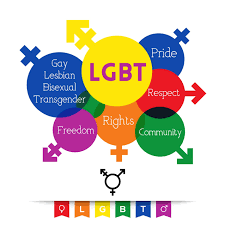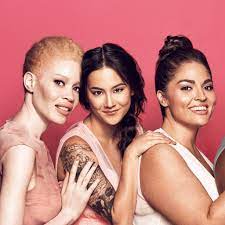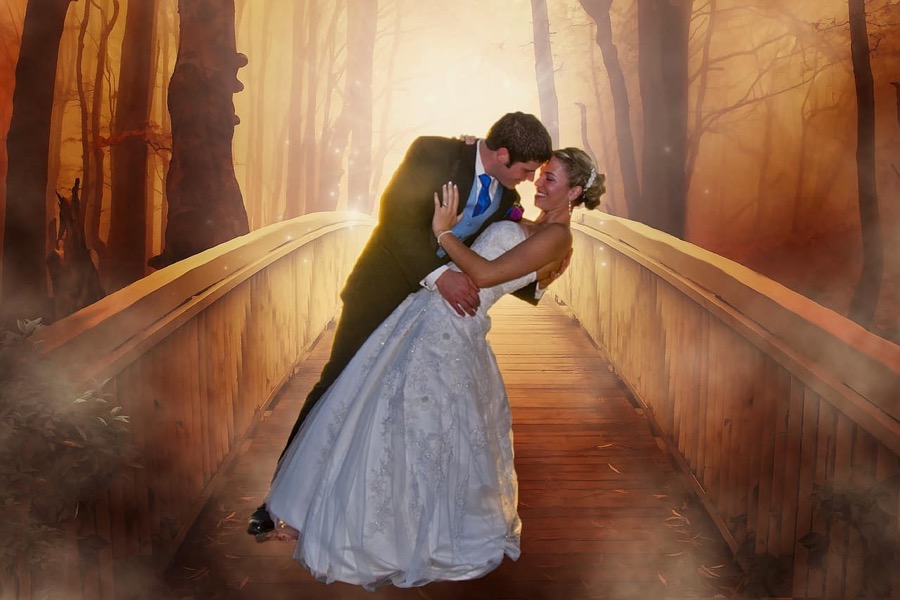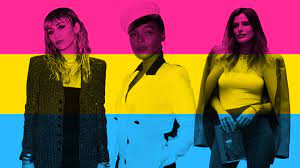This is the 21st century. And there are many advancements in sexuality as we know it. Generally, we have a lot of sexualities. But before that, what are sexualities?
What are Sexualities?
Sexualities are identities that have to do with sexual orientation, the gender(s) we are attracted to.
How many Sexualities are there?
Generally, we talk about sexualities, there are only seven known. However, they all are umbrella terms.

List of Sexualities
Under the list of sexualities, we have;
1. Lesbian
2. Gay
3. Bisexual
4. Transgender
5. Queer
6. Intersex
7. Asexual
Types of Sexualities
Below are definitions of some types of sexualities.
#1. Allosexual:
A person that is allosexual feels sexual attraction towards other people. It can even cut through the LGBTQ sexualities. That is, people with this particular sexual orientation can identify with gays, bisexuals, etc.

#2. Androsexual:
A lot of women are androsexual though. Well, this particular sexuality identifies with men. They love masculinity even though they are not necessarily born as males.

#3. Gynesexual:
Some men are gynesexual though. People who identify as gynesexual feel sexually attracted to women. Even though, they are not necessarily assigned females at birth.

#4. Asexual:
According to the LGBTQIA Resource Center, asexuality is an umbrella term/ spectrum. Basically, in this particular sexuality, people have no sexual desires or romantic attraction to anyone.
There are 4 asexual orientations. They are;

a. Sex-repulsed (extremely repulsed by sex or sexual behaviors).
b. Sex-averse (completely uninterested in any sexual behavior).
c. Sex-indifferent (these particular people are neutral to any sexual behavior).
d. Sex-favorable (might be interested or uninterested in sex depending on the situation).
#5. Cupiosexual:
If someone identifies as cupiosexual, they do not experience sexual attraction but still desires to engage in sexual behavior or have a sexual relationship.

#6. Autoromantic:
Those who are autoromantic experience a romantic attraction toward themselves not other people.

#7. Spectrasexual:
Spectrasexual is a term that describes those who are romantically and sexually attracted to multiple sexes, genders, and gender identities but not all of them.

#8. Demiromantic:
Basically, when anyone identifies with demiromantic sexualities, he or she does not feel romantic attraction to people.
#9. Demisexual:
Although it sounds similar to demiromantic sexualities, however, people who identify with this particular sexuality feel sexual attractions to the person(s) they have an emotional attachment or bond with.
However, there are some people who are also demisexual and they do not have even the slightest interest in sexual activity.

#10. Gay:
Generally, a person, who identifies with gay sexuality, only feels sexual attraction toward people of the same gender.
Although, people use this term to refer to men who are romantically and sexually attracted to men. However, those in the community use it as an umbrella term. Because it is used for any sexuality, not just a “guy-guy” relationship.

#11. Heteromantic:
Those who are heteroromantic may experience romantic attraction, but not necessarily sexual attraction, to those of a different gender.

#12. Heterosexuality:
Generally, the term “heterosexual” is usually to describe “straight” people. Anyone that identifies with this particular sexuality feels sexual attraction as well as romantic attractions towards people who are from a different gender than their own.

#13. Homoromantic:
Basically, homoromantic sexuality refers to people who are romantically attracted to those of a similar gender to their own.

#14. Lesbian:
Those who identify under lesbian sexuality are usually women who feel sexual and romantic attraction to other women.
Some nonbinary people, who do not identify with the traditional binary sexes (male and female), may also identify as lesbians. This may be because they feel a closer connection to womanhood and are mainly attracted to women.

#15. Monosexual:
Monosexual is an umbrella term encompassing all sexual orientations that feel a romantic or sexual attraction toward only one gender.
Some sexual orientations under this term include heterosexuality, gay, and lesbian.

#16. Multisexual:
Multisexual is a broad term that encompasses all sexual orientations in which people are attracted to more than one gender.
#17. Skoliosexual:
People who identify as skoliosexual typically only feel attraction toward people who are nonbinary.
#18. Bisexual:
A person who identifies as bisexual can be any gender- male, female, or intersex. Basically, bisexuality is simply when a person feels attraction toward their own gender and any other gender(s). The LGBTQIA Resource Center usually classifies the term “bisexuality” and “pansexuality” as the same thing though.

Sexualities and Genders
Generally, when we talk about “sexualities” and gender, it balls down to our biological makeup. Although, “gender” and “sexualities” can almost be seen as the same thing. However, they are not interchangeable. This is because a person’s sexuality is mostly determined by his or her biology/ orientation and makeup. It can either be physiological or psychological though. But gender is a term that refers to social or cultural distinctions associated with being male, female, or intersex.
However, some scholars generally regard gender as a social construct. That means that it is purely fictional and does not exist naturally. However, this particular argument is not really one that can be as easily concluded. Well, because there are still a lot of sexualities and gender constructs in the world still undiscovered.
Aspects of Sexuality on a Scale
Some argue that sexuality exists on a scale or range.
The Kinsey Scale, initially published in 1948, proposed that people did not fall neatly into either heterosexual or homosexual categories.
There are six ratings on the scale, plus one additional category:
0: Totally heterosexual
1: Predominantly heterosexual
2: Predominantly heterosexual, yet with a significant amount of homosexuality.
3: Homosexual and straight in equal measure
4: Predominantly homosexual, but also a little bit heterosexual
5: Predominantly gay, with a smattering of heterosexuality
6: Totally homosexual
x: There are no sociosexual encounters or reactions.
Although innovative at the time, the scale currently has some shortcomings because it does not cover all conceivable sexual orientations and identities.
According to the Trevor Project, there are several spectrums focusing on a person’s:
- Sexual sex in biology
- Gender identification
- Expression of gender
- Presentation of gender
- Sexual preference
On one end of the sexual orientation continuum, a person may be attracted only to women, while on the other end, a person may be drawn only to males.
Those in the middle of the spectrum have varying degrees of sexual and romantic attraction to different genders and sexes.
It is vital to understand that different genders might elicit different sorts of attraction in a person. A person, for example, maybe sexually attracted to one or several genders and romantically attracted to different genders.
In addition, a person may identify with one sexual orientation while experiencing varying amounts of sexual and romantic attraction within that orientation. For example, one person who identifies as bisexual may prefer women to men, whilst another may have a stronger romantic affinity to women but a weaker sexual interest to the other genders.
What is the Significance of Sexuality?
Who a person feels romantic or sexual attraction toward is determined by their sexuality. People may believe that naming their sexuality aids them in dealing with oppression or hardships. It may also assist them in locating a community where they can discuss their experiences.
People may also find it useful to be familiar with the terminology used to describe alternative sexual orientations. People can better appreciate another person’s sexuality if they are familiar with the terms.
Is it necessary for People to disclose their Sexual Orientation?
People do not have to identify with a specific sexual orientation.
The sexual orientation of individuals can shift throughout time. They may also fall under an umbrella term but are unable to find a word that adequately expresses their experience.
However, some people may discover that giving a label to their sexual or romantic orientation helps them build communities with others who have had similar experiences.
Where may a person go for help?
People can seek help from the following organizations and clinics:
- The Trevor Project is a non-profit organization that helps the LGBTQ community.
- The Audre Lorde Project is a New York City-based nonprofit that promotes social justice for the LGBTQIA+ community.
- Zuna Institute is a Black lesbian advocacy organization.
- The National Queer Asian Pacific Islander Alliance is a support organization for the LGBTQ community.
- The American Institute of Bisexuality is a non-profit organization that helps bisexual persons.
- CenterLink is a website that helps users find LGBTQ community centers in their area.
- The Equality Federation maintains a list of statewide LGBTQ organizations.
Summary
A person’s sexual orientation describes who they have romantic and sexual feelings for.
Sexuality can exist on a spectrum, and people do not have to be sexually and romantically attracted to the same person or gender at the same time.
Sexualities FAQ’s
Is Skoliosexual a queer?
Skoliosexual is a new term that refers to those who are attracted to transgender or nonbinary people. According to one source, the word first appeared in 2010 and has since primarily been used in LGBTQIA communities and on platforms such as Tumblr and Reddit.
What is Abrosexual pansexual?
Because of its dynamic nature, abrosexuality differs from pansexuality. A person who is abrosexual may be pansexual at times, but they may also be heterosexual or asexual. Their sexual orientation is changing.
How do I know if I'm Sapiosexual?
You’re a sapiosexual if you’re quickly aroused by someone’s capacity to make you heated, interested, tantalized, and absolutely over yourself with their oral expertise, but without an oral performance. If this describes you, you are most likely a sapiosexual.



